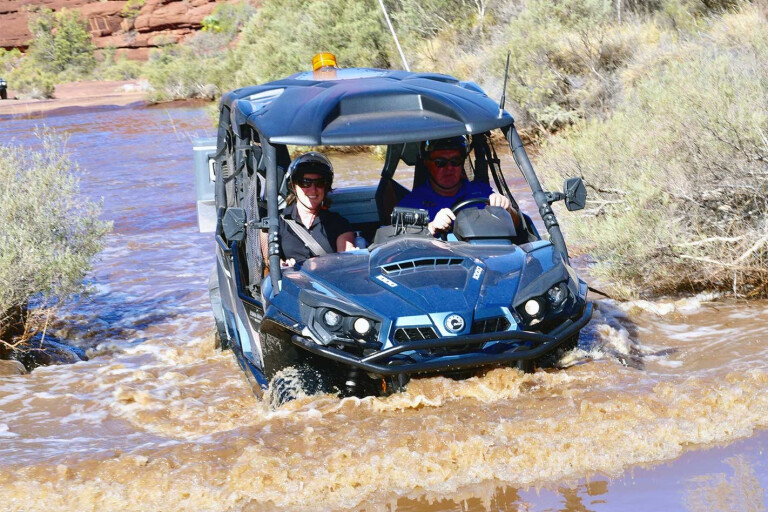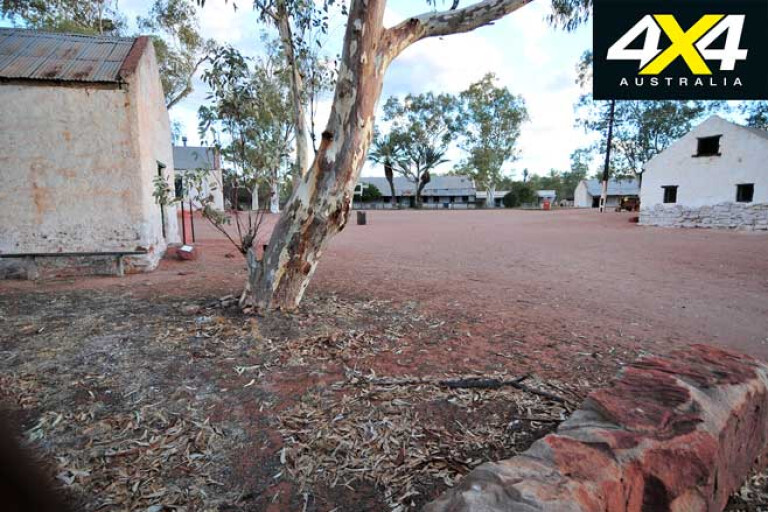
The past year has been a big one for us, taking in many of the iconic 4x4 tracks and destinations that are held dear by four-wheel drivers across the country. In amongst all the travels, we managed to spend some time in Central Australia taking in the delights of the eastern and western MacDonnell Ranges.
While there, and for something a little different, we went into the magnificent verdant gorge of Palm Valley, south-west of Alice Springs, with Finke River Adventures (finkeriveradventures.com.au) on their Can-Am ATVs. They have a special licence to operate within the park and through the adjoining Aboriginal land, which allows you to get off the main access road into the park. Needless to say we had a ball, with the trip starting at the historic Aboriginal settlement of Hermannsburg.

Hermannsburg itself had been established by Lutheran Missionaries in 1877 and was the first European settlement in the heart of the continent, and for many years the largest. Today the Hermannsburg Historic Precinct (hermannsburg.com.au) is well worth a visit.
It had been ages since we had visited and wandered around the delightful oasis that is Palm Valley, which was first discovered by Europeans when Ernest Giles stumbled on the place back in 1872. He named this impressive valley the Glen of Palms, while Ferdinand von Mueller, the eminent botanist based in Melbourne, identified the palms as Livistona mariae – a very old species found in North Africa.
More modern researchers, with the knowledge of tectonic plates and continental drift, thought the palms were a hangover from a distant Gondwana land. Even the local government and tourist paraphernalia back in the 1990s waxed lyrically about the red cabbage palm, stating it was a survivor from a much wetter rainforest past when Australia was connected to Africa and Antarctica.
Now the most recent research has blown that theory out the window and claims the palms of the Finke River are the same species as you’ll find at Mataranka in the tropics of the NT, and at Lawn Hill in the Gulf Country of Queensland. More surprisingly is the fact that they only became separated from each other about 15,000 years ago, which is a long way short of the 100 million years when the continent was a part of Gondwana.

The question now is how and why these three lots of palms, separated by 1000km or more, came to be in Central Australia, and if humans were involved in their long-distance dispersal. Going by the signs at the start of the walk into the valley, the jury is still out on how they got here.
There are three theories, but the old one from Gondwana land has lost credibility in the last few years, so that leaves two. One is that birds ate the fruit and then flew south and dropped the seeds, which resulted in the verdant extravaganza we now have. Another is the palms being brought to this gorge sometime in the distant past by Aboriginal people. The latter seems to be the most likely scenario, but it raises the question, why only to these three very separate places?
No matter what the answer turns out to be, Palm Valley, with its impressive red rock walls and its verdancy of palms and ancient cycads, is certainly a place not to be missed. And a visit here is even more fun on a Can-Am, so put it on your list of things to do next time you are in Central Australia!

COMMENTS